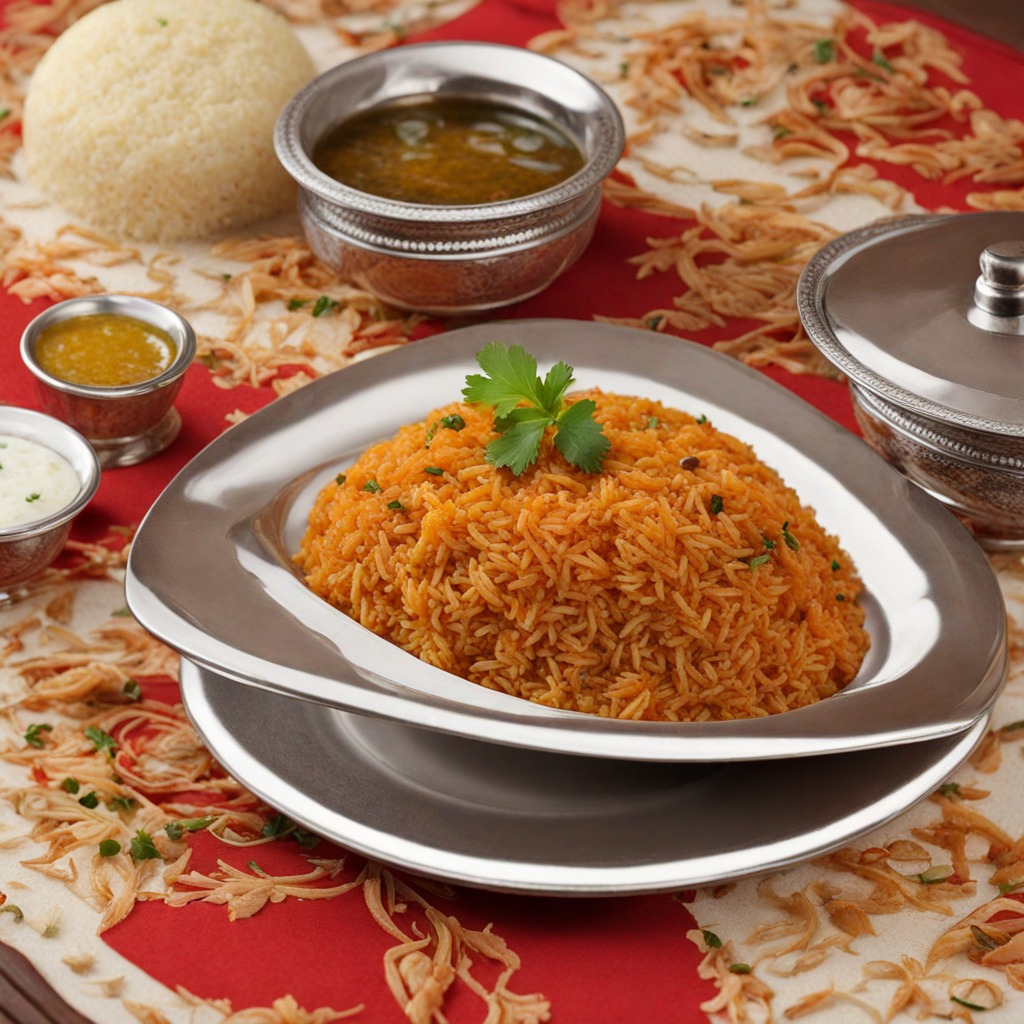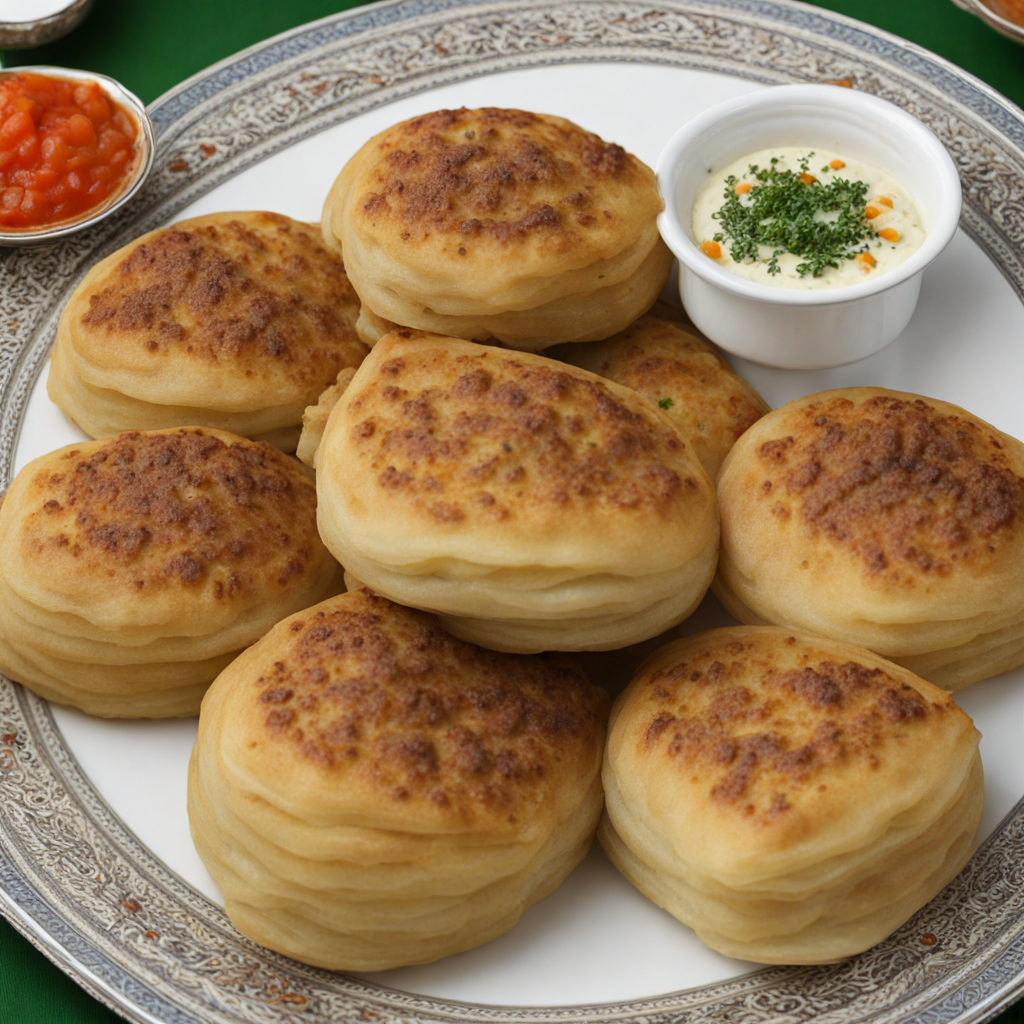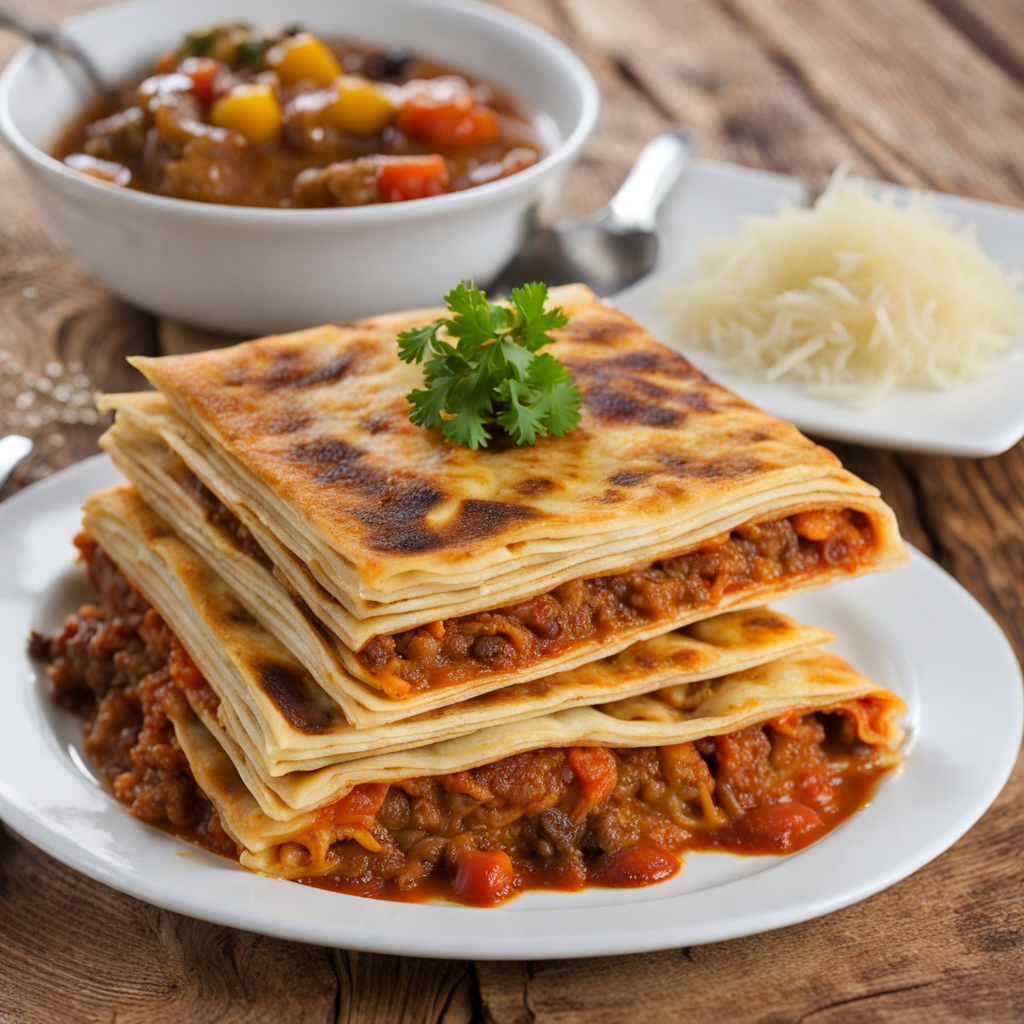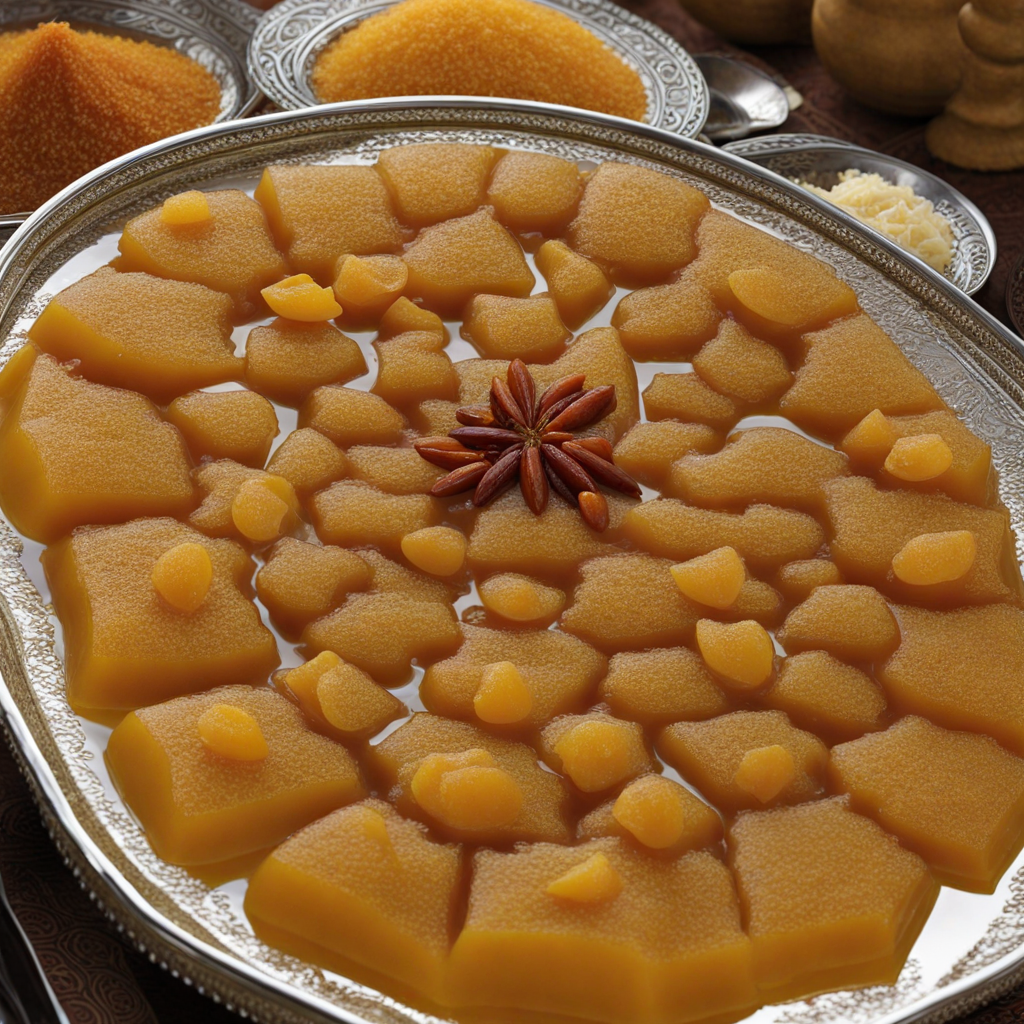Madrouba
Madrouba is a traditional Omani dish that beautifully marries simplicity with rich flavors. At its core, this hearty meal consists of rice that is cooked with tender pieces of chicken or lamb, infused with a blend of aromatic spices. What sets Madrouba apart is its unique preparation method, where the ingredients are simmered together until the rice breaks down and melds into a creamy, porridge-like consistency. The use of spices such as cumin, coriander, and turmeric not only enhances the flavor but also adds a vibrant color to the dish, making it visually appealing as well. As you take your first bite of Madrouba, you will be greeted by a comforting warmth that envelops the palate. The soft, creamy texture of the rice contrasts beautifully with the succulent meat, creating a satisfying mouthfeel. The spices provide a gentle heat that lingers, while the aromatic notes awaken the senses. Often garnished with fried onions or fresh herbs, Madrouba is a dish that offers both a homely comfort and a culinary adventure, inviting you to savor the rich culinary heritage of Oman. Madrouba is typically served as a communal dish, encouraging sharing and togetherness, which is central to Omani culture. It is often accompanied by a side of fresh salad or warm bread, making it a complete meal. Whether enjoyed during a family gathering or as part of a festive occasion, Madrouba not only satisfies hunger but also fosters connection among those who share it. Each mouthful tells a story of tradition and hospitality, inviting you to dive deeper into the flavors of Oman.
How It Became This Dish
The History of مدروبة (Madrooba): A Culinary Gem of Oman #### Origins Madrooba, a beloved Omani dish, is more than just food; it represents a rich tapestry of history, culture, and tradition in the Sultanate of Oman. The origins of madrooba can be traced back to the coastal regions of Oman, where fish and seafood have been a crucial part of the local diet for centuries. With its strategic location along the Arabian Sea, Oman has a long-standing maritime tradition that has shaped its culinary practices. The name "madrooba" is derived from the Arabic root "ضرب" (darab), which means "to hit" or "to beat." This refers to the preparation method where fish is pounded or mashed with spices and mixed with rice, creating a unique texture and flavor profile. Historically, this dish was made with the catch of the day, primarily from the waters of the Gulf of Oman. Fishermen would prepare madrooba on the shores, using their fresh catch, which emphasizes the dish's connection to Oman's fishing heritage. #### Cultural Significance Madrooba holds a special place in Omani culture and is often associated with communal gatherings and celebrations. It is commonly served during family gatherings, weddings, and festive occasions, symbolizing hospitality and community. The preparation of madrooba is often a communal activity, where family members come together to cook, share stories, and strengthen bonds. In Oman, food is not merely sustenance; it is an integral part of social interactions and cultural identity. The act of sharing a meal like madrooba reflects the values of generosity and kinship that are deeply rooted in Omani society. It is also a dish that showcases the rich flavors and culinary techniques that have been passed down through generations. The spices used in madrooba, such as turmeric, cumin, and coriander, not only enhance the flavor but also connect the dish to the broader spice trade that has historically influenced Oman's cuisine. #### Development Over Time The development of madrooba over the centuries showcases the evolution of Omani culinary practices. Traditionally, madrooba was made with local fish, such as hammour (grouper) or jazar (snapper), which were abundant in Omani waters. The dish was often accompanied by rice, a staple in Omani meals, and seasoned with a blend of spices that reflect the region's diverse influences. As Oman's trade networks expanded, especially during the 17th and 18th centuries, new ingredients and cooking techniques began to emerge. Influences from Indian, Persian, and East African cuisines began to permeate Omani cooking, and madrooba was no exception. The introduction of new spices and various cooking methods enriched the dish, making it a canvas for culinary creativity. In contemporary Oman, madrooba has become a beloved national dish, often featured in restaurants and at formal gatherings. Its preparation has also adapted to modern tastes and dietary preferences. While traditional recipes still prevail, variations of madrooba have emerged, incorporating different types of fish and even vegetarian versions using chickpeas or lentils for those seeking plant-based options. The rise of tourism in Oman has further propelled the popularity of madrooba, with visitors eager to experience authentic Omani cuisine. Food festivals and culinary tours often highlight madrooba, allowing both locals and tourists to appreciate its cultural significance and taste its rich flavors. #### Ingredients and Preparation The traditional preparation of madrooba involves several key ingredients, with fish as the star. The fish is first boiled and then pounded or mashed, mixed with spices, and incorporated into a base of rice. The cooking process is meticulous; the rice is often cooked separately and then combined with the fish mixture to create a cohesive dish. The spices are crucial to the dish's identity. Turmeric gives the madrooba its vibrant yellow color, while cumin and coriander add depth and warmth. Garlic and onions are typically sautéed at the beginning of the cooking process, creating a flavorful base. The combination of spices not only enhances the taste but also reflects the historical trade routes that brought diverse flavors to Oman. Modern adaptations of madrooba may also include vegetables, such as tomatoes or bell peppers, which add freshness and texture. Additionally, some chefs experiment with garnishes like fresh herbs or a drizzle of olive oil to modernize the presentation while respecting the traditional roots. #### Madrooba Today Today, madrooba is celebrated as a symbol of Omani heritage, and its presence is felt across the country. From coastal towns to urban centers, the dish can be found in homes and restaurants, each preparing it with its unique twist while honoring the traditional methods. Omani chefs are now showcasing madrooba in international culinary events, promoting it as part of a broader narrative of Omani cuisine. This visibility is essential not just for preserving the dish's legacy but also for educating others about Oman's rich culinary landscape. In recent years, there has been a growing movement towards sustainability and local sourcing in Omani cooking. As concerns about overfishing rise, many chefs are now focusing on using seasonal and locally sourced fish, ensuring that the culinary traditions of madrooba can be enjoyed for generations to come. #### Conclusion Madrooba is more than just a dish; it is a representation of Oman's identity and culture. Its history reflects the country's maritime heritage, the influence of trade and cultural exchange, and the importance of community and hospitality. As it continues to evolve in modern times, madrooba remains a cherished part of Omani life, symbolizing the flavors of the past while adapting to the tastes of the present. Whether enjoyed at a family gathering or a bustling restaurant, madrooba serves as a delicious reminder of the rich culinary traditions that define Oman.
You may like
Discover local flavors from Oman






